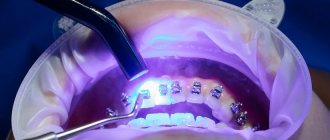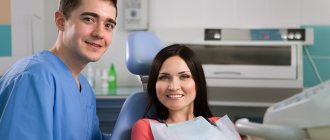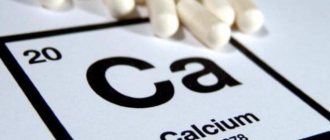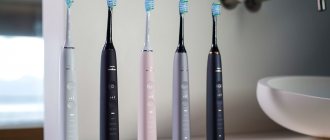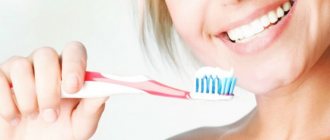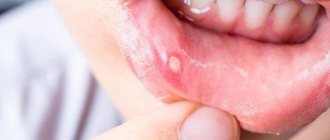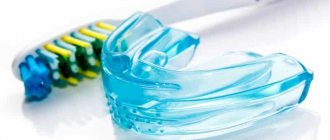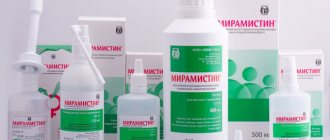Currently, medicine has come so far that diagnostic methods have become more accurate, and a variety of methods allows us to achieve an accurate diagnosis, and, therefore, the treatment prescribed by a doctor will be more effective. The medical center has its own clinical laboratory, which uses the most modern diagnostic methods. In particular, it is possible to use several methods to diagnose the presence of viruses in the human body. For example, a saliva test for viruses is the most informative and accurate.
Why is saliva taken for analysis?
Saliva is a biological fluid with important functions:
- ensuring food chewing;
- formation of a food bolus;
- swallowing function;
- oral cavity protection;
- Salivation is a process that produces lubricant.
It is a colorless liquid with a neutral alkaline reaction, which contains the following substances:
- antimicrobial components (lysozyme, secretory immunoglobulin A);
- digestive enzymes (ptialin, lingual lipase);
- epidermal growth factor;
- chloride, potassium, sodium and other electrolytes;
- amino acids, glucose, lactic acid, vitamins K, C, B1, H.
That is, the composition of saliva completely reflects the structure of blood plasma.
Biochemical analysis of saliva in Moscow
The study identifies metabolites of oral microorganisms (volatile fatty acids):
- oil;
- propionic;
- vinegar
The detection of a total amount of short-chain fatty acids in the oral fluid at a level of 0.8–1.9 mg/g indicates the normal state of the oral microflora.
A decrease or increase in the total amount of short-chain fatty acids indicates a change in the quantity and functional activity of obligate and opportunistic microflora of the oral cavity.
An increase in the relative content of propionic and butyric acids in the qualitative composition of short-chain fatty acids indicates an increased number of populations of anaerobic microorganisms. With a relative content of propionic acid at the level of 0.17–0.185 units. and acetic acid at a level of 0.75–0.78 units. there is an increase in the number of bacteria of the genus Bacteroides; with a butyric acid content of 0.03–0.35 units, acetic acid at a level of 0.6–0.65 units. and propionic acid at a level of 0.09–0.1 units. – bacteria of the genus Clostridium and Fusobacterium; the content of propionic acid is at the level of 0.19–0.21 units, butyric acid at the level of 0.045–0.055 units. and acetic acid at a level of 0.7–0.75 units. indicates an increase in mixed anaerobic flora in the oral cavity.
The content of propionic acid is 18–20%, butyric acid is 0.1–0.12 units. and isoacids at the level of 0.059–0.065 units. indicates an increase in the amount of anaerobic flora with proteolytic and hemolytic activity. The content of acetic acid is at the level of 0.89–0.93 units, propionic acid at the level of 0.055–0.09 units, butyric acid at the level of 0.015–0.025% and isomers of short-chain fatty acids at the level of 0.03–0.038 units. speaks of an increase in microorganisms of the genera E. coli, aerobic streptococci and staphylococci; the acetic acid content is 0.87–0.91 units. and isomers of short-chain fatty acids at a level of 0.07–0.085 units. characteristic of an increase in populations of aerobic microorganisms with proteolytic activity.
Change in relative acid content within 0.05–0.06 units. from normal values indicates minimal changes in the microflora of the oral cavity.
| A- and anaerobic microorganisms1 producing SCFA. | ||
| Gut bacteria | Basic carboxylic acids | Additional acids produced |
| Bifidobacterium (G+), Lactobacillus (G+), (Actinomyces), Ruminococcus (G+) Aerobic flora (strepto-, staphylococci) | Acetic acid | + dairy |
| Intestinal bacteria Main carboxylic acids Additional produced acids Bifidobacterium (G+), Lactobacillus (G+), (Actinomyces), Ruminococcus (G+) Aerobic flora (strepto-, staphylococci) Acetic acid + lactic Veillonella (G-), Propionibacterium (G+), Bacteroides (G-) Arachnia (G+), Anaerovibrio (polar flagella) | Propionic acid | + vinegar |
| Acidaminococcus (G-), Bacteroides (G-), Cloctridium, Eubacterium (G+), Lachnospira (G+), Butyrivibrio (polar flagella), Gemmiger (G-), Coprococcus (G+), Clostridium (G-) Fusobacterium (G- ) Cloctridium difficile (!) | Butyric acid UK, MK, iMK, VK, iVK, iKK | + vinegar without iso-oil |
| Streptococcus (G+), Leptotrichia buccalis (G-) Peptococcus (G-) | Lactic acid | Lactic acid |
| Megasphaera (G-) | Oil, iso-oil, valerian, nylon, iso-valeric, iso-nylon | |
Sputum. Tuberculosis
- Sputum is collected in the morning, on an empty stomach. Before collecting sputum, brush your teeth and rinse your mouth with water to remove food particles and bacterial plaque. Take two deep breaths, holding your breath for a few seconds, and after each deep breath exhale slowly. Then inhale a third time and forcefully exhale (push) the air out. Inhale again and clear your throat well.
- Hold the container as close to your mouth as possible and carefully spit the mucus into it after coughing. Be careful not to get any sputum on the edge of the container. Do not touch the inside of the lid or the sides of the sterile container with your fingers. Close the container tightly with the lid.
- Wash your hands with soap.
- Deliver the morning sputum collected for research to the laboratory no later than 1–1.5 hours after collection. In this case, conditions must be created to prevent its cooling during transportation. Otherwise, changes in sputum qualities and the composition of microbial colonies will quickly occur, which may distort the results of the study.
Attention! You should not collect sputum released during expectoration, only when coughing. Saliva entering the sample can significantly affect the test result.
How does the procedure work and does its cost vary depending on the type of sample?
No special equipment is required to obtain DNA from saliva. Therefore, such an analysis costs the same as deciphering fragments obtained from a standard sample. At the first stage, doctors isolate fragments using special centrifuges and fragment sorters. Then the analysis of loci begins using special reagents. It is important that they are of high quality, since the accuracy of DNA paternity testing largely depends on this. That's why you shouldn't go to centers with a bad image. Without certified equipment and the necessary substances, the workers of such an institution will not be able to guarantee the accuracy of the result is 99.9999 percent.
In addition, centers with a dubious reputation often do not have enough doctors on staff. Because of this, they cannot work in two independent groups. And this is the only way to get rid of the risk of the influence of the “human factor” on the final conclusion. Geneticists must draw conclusions, compare them, and only then issue papers that confirm or refute paternity, kinship, and nationality.
Often such a test is carried out in order to present a document in court and win the case. Therefore, doctors draw up papers in accordance with the standards, after which the conclusion receives legal force.
Is it possible to do a DNA test using saliva?
Saliva is a non-standard sample that contains the same number of DNA fragments as hair, nails, and epithelium. Therefore, it can be used for the procedure. But in order to get the right result, you need to adhere to the basic rule - protect the sample from particles from the outside. Most often, chewing gum is passed along with saliva . This material is packaged in a sealed bag and care is taken to ensure that pieces of skin, blood and various particles do not get in there. Therefore, you should not take the sample with your bare hands. A person may not even notice that a piece of his skin has peeled off or there is a small scratch on his finger from which a drop of blood has flowed.
If the collection is carried out correctly and a sufficient amount of material is provided, geneticists will give an opinion following the standard procedure. By the way, the accuracy of the result is not affected by the amount of material. The only thing that depends on the volume is whether molecular biologists will be able to isolate DNA fragments or not. If this part of the procedure is successful, the result will be 99.9999 percent correct.
Sputum culture for microflora and sensitivity to antibiotics
For bacteriological examination, sputum is collected before the start of antibacterial therapy or after a certain period of time after administration of the drug.
Collection procedure
- Sputum is collected in the morning, on an empty stomach. Before collecting sputum, brush your teeth and rinse your mouth with water to remove food particles and bacterial plaque. Take two deep breaths, holding your breath for a few seconds, and after each deep breath exhale slowly. Then inhale a third time and forcefully exhale (push) the air out. Inhale again and clear your throat well.
- Hold the container as close to your mouth as possible and carefully spit the mucus into it after coughing. Be careful not to get any sputum on the edge of the container. Do not touch the inside of the lid or the sides of the sterile container with your fingers. Close the container tightly with the lid.
- Wash your hands with soap.
- Deliver the morning sputum collected for examination to the laboratory. In this case, conditions must be created to prevent its cooling during transportation. Otherwise, changes in sputum qualities and the composition of microbial colonies will quickly occur, which may distort the results of the study.
Attention! You should not collect sputum released during expectoration, only when coughing. Saliva entering the sample can significantly affect the test result.
Sputum. General clinic
- Sputum is collected in the morning, on an empty stomach. Before collecting sputum, brush your teeth and rinse your mouth with water to remove food particles and bacterial plaque. Take two deep breaths, holding your breath for a few seconds, and after each deep breath exhale slowly. Then inhale a third time and forcefully exhale (push) the air out. Inhale again and clear your throat well.
- Hold the container as close to your mouth as possible and carefully spit the mucus into it after coughing. Be careful not to get any sputum on the edge of the container. Do not touch the inside of the lid or the sides of the sterile container with your fingers. Close the container tightly with the lid.
- Wash your hands with soap.
- Deliver the morning sputum collected for research to the laboratory no later than 1–1.5 hours after collection. In this case, conditions must be created to prevent its cooling during transportation. Otherwise, changes in sputum qualities and the composition of microbial colonies will quickly occur, which may distort the results of the study.
Attention! Do not collect sputum released during expectoration. Saliva entering the sample can significantly affect the test result.
From ulcers to infections
An experienced doctor can judge the condition and functioning of certain organs by the nature of saliva, as well as identify certain diseases at an early stage. Thus, during infectious diseases, the slightly alkaline reaction of saliva changes to acidic. With nephritis (inflammation of the kidneys), the amount of nitrogen in saliva increases, the same thing happens with peptic ulcers of the stomach and duodenum. With diseases of the thyroid gland, saliva becomes viscous and foamy. The composition of saliva also changes in some tumors, which makes it possible to detect the disease or confirm the diagnosis when the clinical picture is not yet obvious.
Article on the topic
Come on, breathe! What causes bad breath
As the body ages, the proportions of micro- and macroelements in saliva are disrupted, which leads to the deposition of tartar, increasing the likelihood of caries and inflammatory periodontal diseases.
There is a change in the composition of saliva during fasting, as well as with certain hormonal imbalances.
So don’t be surprised if your doctor orders a saliva test—you can really learn a lot from it.
Taste of illness. How to determine your diagnosis by the taste in your mouth
More details
Sputum. Microscopic mushrooms (complex)
Sputum is collected before starting antibiotic therapy. First brush your teeth, gums and tongue with a toothbrush and rinse your mouth with boiled water at room temperature.
Collection procedure
- Take two deep breaths, holding your breath for a few seconds, and after each deep breath exhale slowly. Then inhale a third time and forcefully exhale (push) the air out. Inhale again and clear your throat well.
- Hold the container as close to your mouth as possible and carefully spit the mucus into it after coughing. Be careful not to get any sputum on the edge of the container. Do not touch the inside of the lid or the sides of the sterile container with your fingers. Close the container tightly with the lid.
- Wash your hands with soap.
- Deliver the morning sputum collected for examination to the laboratory.
Attention! A high-quality material for analysis is considered to be sputum that is mucous or mucopurulent in nature, and also contains dense whitish inclusions.
Rules for sputum collection
It is unacceptable to send sputum for examination in containers not intended for these purposes, as they may contain substances that can distort the test results.
Sputum should not be divided into two parts for examination in different laboratories, since important components may end up in only one of the containers.
- Sputum is collected in the morning, on an empty stomach. Before collecting sputum, brush your teeth and rinse your mouth with water to remove food particles and bacterial plaque. Take two deep breaths, holding your breath for a few seconds, and after each deep breath exhale slowly. Then inhale a third time and forcefully exhale (push) the air out. Inhale again and clear your throat well.
- Hold the container as close to your mouth as possible and carefully spit the mucus into it after coughing. Be careful not to get any sputum on the edge of the container. Do not touch the inside of the lid or the sides of the sterile container with your fingers. Close the container tightly with the lid.
- Wash your hands with soap.
- Deliver the morning sputum collected for research to the laboratory no later than 1–1.5 hours after collection. In this case, conditions must be created to prevent its cooling during transportation. Otherwise, changes in sputum qualities and the composition of microbial colonies will quickly occur, which may distort the results of the study.
Attention Do not collect sputum released during expectoration, only when coughing. Saliva entering the sample can significantly affect the test result.
Determination of hormones in saliva
Hormones are powerful molecules needed to maintain physical and mental health. The steroid hormone family includes the estrogens - estrone (E1), estradiol (E2), estriol (E3), progesterone, testosterone, DHEA-S and cortisol. Variation in these hormones plays a large role in the changes observed in major life cycle events such as pregnancy, menopause and aging. Therefore, accurate measurement of hormone levels helps to reliably assess menstrual irregularities in young women, menopausal changes in pre- and postmenopausal women, and changes during andropause in men. An imbalance of any hormone can throw physical and mental health out of balance, causing worsening and even serious health problems.
| There are several ways to test hormones (saliva, serum and urine), but the most modern method is saliva. This is because only the active parts of the hormones are measured in saliva. The test measures the amount of hormone available to target tissues, that is, the bioavailable amount. For this reason, saliva testing better correlates with specific symptoms of hormone excess or deficiency and is a good way to monitor hormone therapy. |
Acceptance of the validity of saliva testing is based on an understanding of the differences between steroid hormones in saliva and serum.
Most hormones exist in one of two forms: free (5%) or protein-bound (95%). Only free hormones are biologically active or bioavailable and available to bind to receptors. Protein-bound hormones do not conform to receptors and are considered non-bioactive. When blood is filtered through the salivary glands, the bound hormone components are too large to pass through the cell membranes. Only unbound hormones enter saliva. The saliva test measures the bioavailable hormone, the clinically significant portion transferred to receptors in the body's target tissues. Salivary hormone levels are much lower than serum values. When prescribing hormonal therapy based on serum hormonal measurements, there is a risk of prescribing overdoses of drugs. If we determine the values of hormones in the saliva of these same patients, the results will be unusually high. Studies show that when topical or transdermal hormone therapy is used, tissue hormone levels (measured in saliva) increase while serum values remain unchanged. Therefore, serum testing cannot be used to monitor this type of hormonal therapy. Only saliva testing is the most accurate tool.
Indications for the study of hormones in saliva
As men and women age, their hormonal levels change. Sometimes these changes lead to symptoms that require attention.
Therefore, hormonal testing is indicated:
- men and women concerned about changes in hormone levels as a result of age;
- women of reproductive age with symptoms of PMS, possibly associated with hormonal imbalance;
- pre- and postmenopausal women, to assess estrogen and progesterone levels, and to decide whether to prescribe hormone replacement therapy;
- those who need to monitor hormone levels after hormone replacement therapy (oral, sublingual or topical);
- men and women of any age who have symptoms of hormonal imbalance.
Anyone with symptoms related to fatigue, insomnia, stress, immune problems, high sugar and excess weight should have their cortisol and sex hormone levels checked.
24.147 Cortisol (saliva) (HPLC)
24.167 Cortisol (saliva, 4 portions) set (HPLC)
24.170 Progesterone (saliva) (HPLC)
24.171 Estradiol (saliva) (HPLC)
24.172 Testosterone (saliva) (HPLC))
24.173 DHEA (saliva) (HPLC)
24.174 Determination of hormones in saliva (DHEA, Progesterone, Testosterone, Estradiol) (HPLC)
24.175 Adrenal stress syndrome and andropause: Dehydroepiandrosterone (saliva), Cortisol (saliva), Cortisol/DHEA (HPLC).
Why is saliva testing required?
The standard sample for DNA profiling is blood. For examination, 20 ml of venous blood is sufficient. This material is considered the highest quality and most reliable. However, there are many situations in which it is not possible to take a blood sample.
For example, when establishing a close relationship, biomaterial is needed from the alleged father, mother and child. And if a man or woman refuses to donate blood for analysis, the person concerned resorts to non-standard samples.
These include nails, hair - always with the root, since the hair itself is a dead cell, sperm, personal and hygiene items. And, of course, saliva.
How to donate saliva
The sample can be submitted to the laboratory. Using a cotton-tipped swab, scrape the inside of the cheek to collect epithelial cells. The smear is dried at room temperature, sealed and transferred to the research laboratory.
How to collect samples yourself at home? To do this, purchase sterile cotton swabs and a sealed plastic bag. Wash your hands thoroughly, rub the stick along the inside of your cheek, then carefully, being careful not to take the sample with your bare hands, pack it in a bag. The sample can be sent by mail.
The procedure is somewhat different in cases where a sample needs to be obtained if the subject disagrees. The most common materials are cigarette butts and chewing gum with traces of teeth and saliva. The minimum amount of biomaterial on them is sufficient for DNA analysis to establish paternity. Samples must be bagged and sent to the laboratory.
